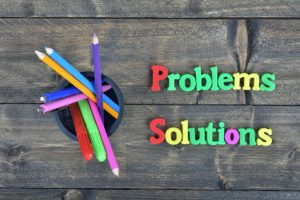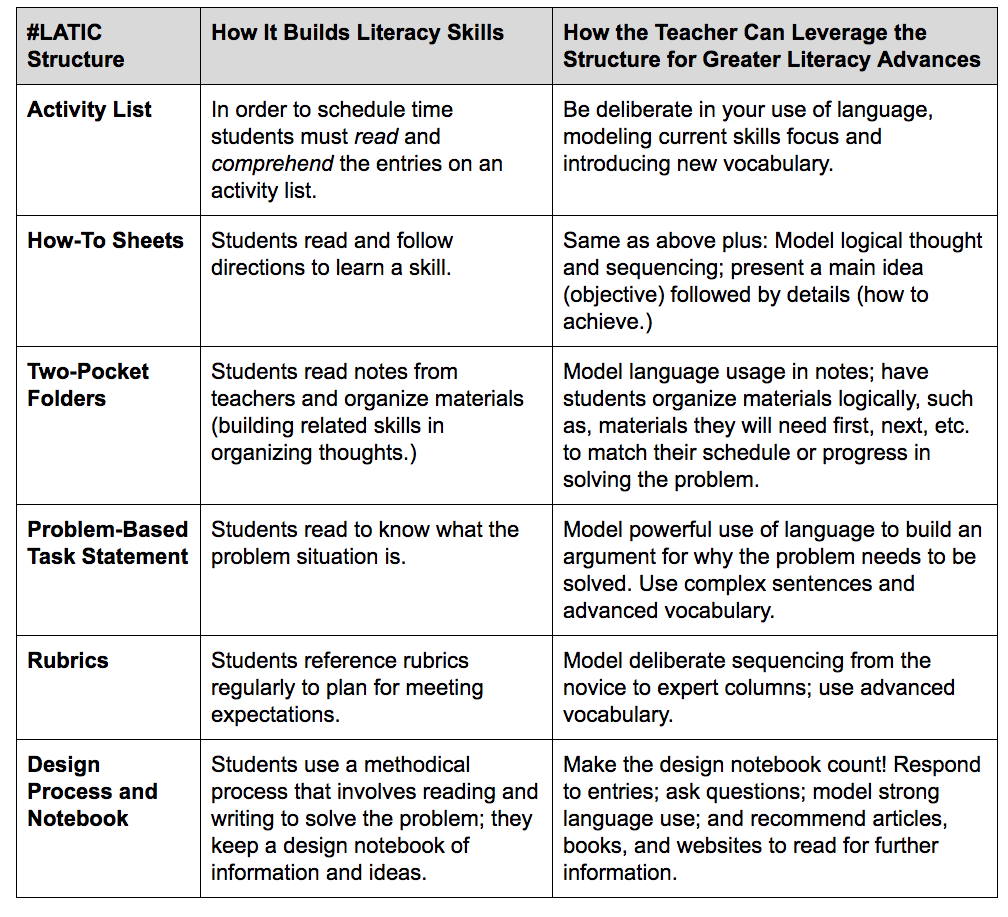 If you want to build literacy skills, leverage the Learner-Active, Technology-Infused Classroom as a social learning environment. Consider that students engage in problem-solving as part of a learning community in which they engage with teachers, outside experts, and one another. They spend their day speaking, listening, reading, and writing! It’s a veritable literacy playground, if you set it up well.
If you want to build literacy skills, leverage the Learner-Active, Technology-Infused Classroom as a social learning environment. Consider that students engage in problem-solving as part of a learning community in which they engage with teachers, outside experts, and one another. They spend their day speaking, listening, reading, and writing! It’s a veritable literacy playground, if you set it up well.

Through the solution-finding process, students discuss what they know, what they need to learn, how they will learn, what they’ve found out, possible solutions, and how they will present the solution to others. In addition, the structures of the classroom provide myriad opportunities for teachers to build literacy skills outside of deliberate literacy instruction.
When I ask students what they like about the Learner-Active, Technology-Infused Classroom, they invariably mention the ability to choose what they do when. That freedom is enhanced through literacy. Given students are motivated to control their own time and learning activities, teachers can use that motivation to deliberately build literacy skills. 
- Use your notes in the two-pocket folder to build vocabulary by using a word and then defining it.
- Model strong language use on your activity list. Instead of saying, “Read article on water cycle and draw your own,” say, “Peruse (read thoughtfully) the article on the water cycle and illustrate a depiction of your own.” Instead of “Write down your ideas from reading the story and meet with a group member to share ideas and agree on one main takeaway,” say, “Generate and capture in writing your insights upon reading the story; meet with a colleague to collaborate on determining one, key insight to glean from the story.” If you want students to build language skills, you need to model them. Create a culture of literacy!
- Have students use a design process to work through a problem, keeping a design notebook in which they write their findings and ideas. (The problem itself will promote reading.)
- When you facilitate, ask students to tell you about what they’re doing and why. Engage in conversation! Introduce vocabulary words there as well.
Below is a grid on just some of the structures of the Learner-Active, Technology-Infused Classroom through which teachers can build literacy skills.

Deliberate and purposeful use of language in the classroom paired with maximizing opportunities for students to speak, listen, read, and write are foundational to building a culture of literacy. Add to that direct instruction in literacy through learning activities, small-group mini-lessons, and concept-based benchmark lessons, and you have the formula for accelerating literacy development. And with strong literacy skills, you can … change the world!
